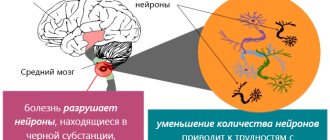Why does it dazzle your eyes?
The causes of ripples (also classified as "noise" or "flicker") can vary. Only an experienced doctor is competent to correctly determine what exactly this phenomenon means. For this, detailed diagnostics are carried out. Osteochondrosis of the cervical spine is perhaps one of the most common causes of “noise”. The second frequently diagnosed concomitant pathology is vegetative-vascular dystonia.
Ripples in the eyes can occur unexpectedly, for example, when standing up suddenly after a long stay in one position in front of a TV or computer monitor. In this case, the cause of the noise lies in the compression of blood vessels. This phenomenon indicates the onset of stagnant processes.
Rainbow circles before the eyes: the cause
Rainbow circles in the eyes are an unpleasant phenomenon that causes anxiety, discomfort and psychological stress in a person. The nature of the appearance of multi-colored halos is associated with the so-called diffraction phenomenon. It can be observed if you look at a street lamp at night through a veil of rain or a foggy car window. A similar effect also appears if you look at a light source through scratched glasses.
The appearance of iridescent halos before the eyes is based on a change in the refractive power of the cornea, which contributes to a change in the angle of focusing of light rays on the retina.
As a rule, with a long-term systematic manifestation, this pathology indicates serious disorders in the human body. In most cases, the problem is associated with ophthalmological diseases. It may also be a symptom of a neurological or psychiatric disorder. The first thing you should do is contact an ophthalmologist and undergo a comprehensive examination of your vision organs. If necessary, the doctor will redirect the patient to other specialized specialists.
Rainbow circles before the eyes can be caused by:
- Ophthalmological diseases;
- Neurological disorders;
- Psychiatric disorders.
Why do my eyes ripple and my head hurt?
Often, “noise” in the eyes is accompanied by a headache. There may be several reasons for this:
- stress;
- abuse of bad habits (drinking large amounts of alcohol on the eve of pain or excessive use of tobacco);
- oxygen starvation (long stay in a closed room, lack of fresh air);
- overvoltage;
- sudden climate change or weather changes;
- pregnancy.
The appearance of ripples is associated with head and brain injuries (in particular, we are talking about concussions). “Noise” can occur due to overwork, as a result of intense sports training. This can be explained by the fact that the vessels on which a large load was placed cannot cope with their functions. They become compressed, leading to associated symptoms such as drowsiness. At the same time, it happens that you feel dizzy. When there is dazzle in the eyes and a headache, treatment involves eliminating the root cause. To relieve symptoms, it is possible to use analgesics to help alleviate the condition. If the headache intensifies or develops into a migraine, consultation with a specialist is required.
It is known that any disease is easier to prevent than to cure. As a preventive measure for migraines and headaches, which provoke a situation where the eyes dazzle and general malaise sets in, doctors recommend:
- Dedicate enough time to rest, during which the body builds up reserves, restores strength, and also increases the number of leukocytes and improves cell trophism.
- Eliminate nicotine and caffeine. Sometimes it is the coffee drink that causes headaches. If migraine is a consequence of excessive tobacco use, you should reduce the daily number of cigarettes you smoke, minimizing it, or better yet, give up the bad habit altogether.
- Maintain a balanced diet. Headaches can be a consequence of a lack of micronutrients and vitamins in the body. This condition can be especially acute in the winter-spring period, which is characterized by vitamin deficiency. It is important to include fruits, vegetables and pharmacy vitamin complexes in your diet.
- Regular walks in the fresh air will help eliminate pain in the head and the accompanying appearance of ripples.
Rainbow circles before the eyes in neurological and psychiatric disorders
In some cases, the appearance of floating multi-colored circles can be caused by various neurological pathologies, including damage to brain stem structures. Often this process is accompanied by double vision. In this case, the patient should be examined by a neurologist as soon as possible, and also have an MRI or CT scan of the brain. Rainbow circles with jagged edges in a zigzag pattern occur during migraine exacerbation. The appearance of this unpleasant symptom can also be explained by the presence of various visual hallucinations in psychiatric diseases. In this case, the human brain creates its own additional reality. The disorder is often accompanied by auditory hallucinations, insomnia, delusions and paralogical judgments. Sometimes the appearance of circles can be caused by taking strong medications, including antidepressants, medications for heart problems, contraceptives, etc.
Reasons for the appearance of rainbow circles:
- Neurological disorders, including damage to brain stem structures (double vision is observed);
- Psychiatric disorders (accompanied by delusions, auditory hallucinations, etc.);
- Exacerbation of migraine;
- Taking strong medications.
Diagnosis of retinal pigment epithelium detachment
Despite the fact that in ophthalmological practice, retinal detachment with its symptoms is an emergency condition, before starting treatment for this condition, it is necessary to conduct a comprehensive medical examination of the patient.
- An examination using an ophthalmoscope will allow you to assess the location, shape and size of the pathological process. The presence of retinal tears is confirmed or denied.
- Conduct research using contact and non-contact lenses.
- In case of chronic retinal detachment, electrophysiological research methods are used to assess the functional capabilities of the eye and at the same time make a prognosis regarding the restoration of vision in the patient.
- If there are concomitant eye diseases that make examinations with lenses or an ophthalmoscope difficult, ultrasound examination is used.
- Perimetry and assessment of visual acuity are carried out, which makes a proper contribution to determining the magnitude and localization of the pathological process.
- Additionally, intraocular pressure is measured, which may be reduced in comparison with a healthy eye.
Rainbow circles before the eyes: how to get rid of them?
Colored halos in front of the eyes themselves are not a disease. They only indicate the presence of some disorder in the human body. To get rid of this uncomfortable phenomenon, it is first necessary to determine the cause of its occurrence. When diagnosing glaucoma or cataracts, complex treatment is usually used: surgery and medication.
In some cases, the use of eye drops is indicated to slightly improve the patient's condition. If a patient is diagnosed with conjunctivitis, the doctor prescribes the use of anti-inflammatory drugs.
For various neurological and psychiatric disorders, the patient undergoes a comprehensive rehabilitation course. It should be noted that self-medication is strictly prohibited. If circles systematically appear before your eyes, you need to seek medical help as soon as possible.
Why do rainbow circles appear and immediately disappear?
In various ophthalmological, neurological and psychiatric disorders, the appearance of rainbow circles before the eyes is systematic. However, with a one-time manifestation, this symptom is not considered any pathology. The effect can occur as a reaction to various stimuli, such as looking at an excessively bright light source or a sharp impact on the eye muscles. If you press firmly on the organs of vision with your palms and then release, you will notice that “spots” and multi-colored circles will appear for a few seconds. As a rule, the phenomenon goes away after a few seconds, so there is no reason to worry. However, if colored halos systematically appear, without any effect on the eyes, you should urgently consult a doctor (ophthalmologist or therapist) and undergo a comprehensive examination.
Why do colored circles appear and disappear:
- Reaction of the visual organs to an excessive light source;
- Physical impact on the eye muscles.
Diagnostics
To diagnose the primary disease that has led to the appearance of fog before the eyes, you need to perform, at a minimum, biomicroscopy using a slit lamp and examine the fundus with a wide pupil. In this case, it is often possible to identify signs of damage to the cornea, lens, vitreous body or retina [7].
Testing vision with and without correction, as well as determining refraction in conditions of a dilated pupil (cycloplegia) will help identify disorders such as spasm of accommodation, myopia, farsightedness and astigmatism.
Determination of intraocular pressure (IOP) excludes or confirms glaucoma.
Fig. 6 Basic examination (biomicroscopy and ophthalmoscopy) allows in most cases to identify the cause of the appearance of fog
In some cases, additional examinations are necessary to clarify the diagnosis—primarily optical coherence tomography of the retina (including with angiography function) [8]. This method allows you to see minimal changes in the central zone of the retina and the optic nerve head (ONH), accurately and quickly make a diagnosis and prescribe treatment. This test is available in our clinic on the same day of your visit.
| Study | Signs | Disease |
| Vision testing with and without correction | Descending into the distance | Myopia, farsightedness, astigmatism, accommodation spasm |
| Measuring intraocular pressure | Promotion | Acute attack of glaucoma |
| Biomicroscopy of the cornea | Swelling, cloudiness | Keratitis |
| Biomicroscopy of the lens | Cloudiness | Cataract |
| Vitreous ophthalmoscopy | Cloudiness, peeling | DST, ZOST |
| Retinal ophthalmoscopy | Swelling, ruptures, detachment | Macular degeneration, retinal detachment and tears |
| Ophthalmoscopy of the optic disc | Swelling, pallor | Optic neuritis, glaucoma, atrophy |
Table 1. Research method, signs and final diagnosis
Symptom Description
With a unilateral decrease in visual acuity, which is observed against the background of intraocular hypertension, inflammatory eye disease, hemorrhage in this area, the optic nerve may also be affected. A bilateral process is often associated not with local changes in the eyes, but with a systemic disease (cardiovascular pathology, renal failure, severe blood loss, diabetes mellitus).
Blurred vision may be constant or appear towards the end of the day. Decreased vision can occur both in the central parts and in the periphery.
All this must be taken into account when describing complaints - this will help to quickly understand the diagnosis.
What is the retina and why is it important?
Let's imagine the eye in a sagittal, that is, sagittal, section. The surface of the eye is covered by a transparent membrane called the conjunctiva. Above the pupil, the conjunctiva becomes the cornea. Under the conjunctiva is the sclera - it is white, and under the cornea is the iris, in the center of which is the pupil. Behind the pupil is the lens, and behind it is the vitreous body.
It fills most of the intraocular space, and between it and the sclera is the retina, or retina. Its function is the perception of light rays collected and refracted by the cornea and lens. In other words, this one is responsible for the coordinated work of the visual analyzer, converting the received light impulses into electrical ones, which are subsequently transmitted to the cortical analyzer along the optic nerve.
The retina consists of an unevenly distributed number of two types of nerve cells - rods and cones. The former are responsible for light perception, the ability to distinguish the outlines of objects in the dark, as well as navigate in space. They are located relatively evenly over the entire surface of the retina, but still their number is greater at the periphery. Cones are responsible for the difference between colors, their shades and visual acuity in general. This type of nerve cell is focused in the central part of the retina, since this is the area where refracted light rays are projected.
Between the sclera and the retina there is a thin choroid, which provides nutrition to the peripheral part of the visual analyzer. Detachment of the retina from the choroid of the eye entails a violation of its trophism, which means necrotization and loss of the ability to transform and transmit further light impulses. In other words, a person simply loses his vision.
Treatment
Let’s find out what methods will help eliminate the unpleasant symptom of blurred vision.
If refractive error occurs as a result of ophthalmological diseases, wearing special glasses or lenses will help. A surgical intervention such as LASIK may also not help in this case, eliminating refractive problems.
If the symptom is caused by dry eye syndrome, it is necessary to use drugs that imitate natural tears. Moisturizing gels may also be suitable.
This is what dry eye syndrome looks like
If your vision is blurry due to cataracts, the problem can be corrected surgically. For glaucoma, special drops are used to lower intraocular pressure. In severe cases of glaucoma, surgery is also performed.
Note that ophthalmological causes of clouding in the eyes must be treated without fail . If some diseases are neglected, this can even lead to complete blindness: it should not be taken to such an extreme.
Other diseases that cause blurred vision are each treated in their own way: in each specific case the method of treatment is different. You may also find it useful and interesting to learn about what retinal angiopathy looks like in newborns.
Cost of retinal detachment surgery:
| № | Service name | Price in rubles | Make an appointment |
| 2011074 | Introduction of drugs of the 3rd degree of complexity into the vitreous cavity | 78000 | Sign up |
| 2011073 | Introduction of drugs of the 2nd degree of complexity into the vitreous cavity | 27000 | Sign up |
| 2011072 | Introduction of drugs of the 1st degree of complexity into the vitreous cavity | 22200 | Sign up |
| 2011071 | Peripheral vitrectomy 3rd category of complexity | 14400 | Sign up |
| 2011070 | Peripheral vitrectomy 2nd category of complexity | 12000 | Sign up |
| 2011069 | Peripheral vitrectomy of 1st category of complexity | 9600 | Sign up |
| 2011068 | Microinvasive revision of the anterior chamber | 14400 | Sign up |
| 2011075 | Intraoperative administration | 7200 | Sign up |
| 2011066 | Reconstruction of the anterior chamber | 7200 | Sign up |
| 2011065 | Removal of perfluoroorganic liquids from the vitreous cavity | 9000 | Sign up |
| 2011064 | Removing liquid silicone from the vitreous cavity | 12000 | Sign up |
| 2011063 | Circular retinotomy or retinectomy | 16800 | Sign up |
| 2011062 | Retinotomy and retinectomy | 9000 | Sign up |
| 2011061 | Injection of gas into the vitreous cavity | 12000 | Sign up |
| 2011060 | Injection of liquid silicone into the vitreous cavity | 18000 | Sign up |
| 2011059 | Introduction of perfluoroorganic liquids into the vitreous cavity | 15000 | Sign up |
| 2011058 | Circular peripheral endolaser coagulation of the retina | 16500 | Sign up |
| 2011057 | Endolaser coagulation of the retina, delimiting (one quadrant) | 7200 | Sign up |
| 2011056 | Endodiathermocoagulation | 9000 | Sign up |
| 2011055 | Removal of epiretinal membranes or posterior hyaloid membrane of the third category of complexity | 57600 | Sign up |
| 2011054 | Removal of epiretinal membranes or posterior hyaloid membrane of the second category of complexity | 47700 | Sign up |
| 2011053 | Removal of epiretinal membranes or posterior hyaloid membrane of the first category of complexity | 36600 | Sign up |
| 2011067 | Endodrainage of subretinal fluid | 7200 | Sign up |
| 2011052 | Unscheduled revision of the vitreal cavity | 42000 | Sign up |
| 2011051 | Revision of the vitreous cavity of the third category of complexity | 33000 | Sign up |
| 2011050 | Revision of the vitreous cavity of the second category of complexity | 28200 | Sign up |
| 2011049 | Revision of the vitreous cavity of the first category of complexity | 20400 | Sign up |
| 2011048 | Vitreoretinal surgery for complicated conditions (2-stage) of the highest category | 210060 | Sign up |
| 2011047 | Vitreoretinal surgery for complicated conditions (2-stage) of the third category | 162060 | Sign up |
| 2011046 | Vitreoretinal surgery for complicated conditions (2-stage) of the second category of complexity | 119940 | Sign up |
| 2011045 | Vitreoretinal surgery for complicated conditions (2-stage) of the first category of complexity | 84420 | Sign up |
| 2011042 | Vitrectomy for complicated conditions of the second category | 90000 | Sign up |
| 2011041 | Vitrectomy for complicated conditions of the first category of complexity | 83400 | Sign up |
| 2011039 | Vitrectomy for uncomplicated hemophthalmos or vitreous opacities of the second category | 64500 | Sign up |
| 2011038 | Vitrectomy for uncomplicated hemophthalmia or vitreous opacities of the first category | 54000 | Sign up |
| 2011037 | Removal of a silicone filling implanted in another medical institution | 24900 | Sign up |
| 2011036 | Removal of a silicone filling within a period of more than 6 months. after the first operation | 18660 | Sign up |
| 2011035 | Pneumoretinopexy for retinal detachment | 22200 | Sign up |
| 2011034 | Additional extrascleral filling in case of detachment | 28860 | Sign up |
| 2011033 | Combined extrascleral filling for detachment | 64800 | Sign up |
| 2011032 | Circular extrascleral filling for detachment | 48420 | Sign up |
| 2011031 | Local extrascleral filling for retinal detachment | 37800 | Sign up |
| 2011030 | Extrascleral ballooning for retinal detachment | 31800 | Sign up |
| 2011028 | Set of disposable consumables for vitreoretinal surgery | 57600 | Sign up |
| 2011027 | Introduction of drugs into the vitreous cavity (Eylea, Lucentis, Ozurdex) | 55200 | Sign up |
| 2011040 | Vitrectomy for uncomplicated hemophthalmia or vitreous opacities of the third category | 78600 | Sign up |
| 2011044 | Vitrectomy for complicated conditions of the third category of complexity | 144900 | Sign up |
Making an appointment Today: 9 registered
Retinal detachment: is it possible to return vision?
There is no clear answer to this question. In order to find out the prognosis of treatment results in each specific case, you must personally visit the doctor. Remember: the sooner you see a doctor about treatment, the more results it will give.
There is only one method of treating retinal detachment, and it is surgical. But there are already two types of it, and they are divided into extrascleral, that is, those that are produced through the sclera, and endovitreal, where the vitreous body acts as the point of access to the diseased area.
The principle of both types of surgery is to block the gap, as well as bring the retina closer to the choroid. Both serve to restore adequate trophism of the retina, which is the key to the return and preservation of vision.
Of course, such a threatening problem should be addressed to medical institutions that have a sufficient level of qualifications and an impeccable reputation. Undoubtedly, every person wants to receive the most friendly attitude, close attention and an acceptable price for services.
In Moscow, the multidisciplinary medical center named after Svyatoslav Fedorov fully meets these requirements. Constantly improving the qualifications of doctors, European standards of treatment and attentive nursing staff - this is what awaits you when you contact our medical center.
Remember, retinal detachment does not tolerate either diagnostic or therapeutic failures. Save your vision with us!










